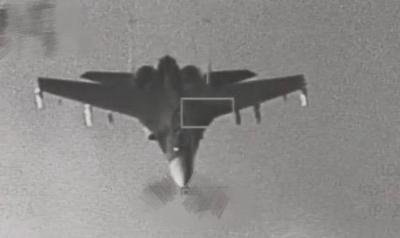President Ma Ying-jeou (馬英九) said yesterday that the 1952 Treaty of Taipei affirmed the transfer of Taiwan’s sovereignty from Japan to the Republic of China (ROC).
Ma’s statement deviated from his previous claim that it was the 1943 Cairo Declaration that gave the ROC its claim to Taiwan.
“While the 1952 treaty does not specify the legal successor government [of Taiwan], it was clear between the lines,” he said. “Japan would not have signed the accord with the ROC if it did not intend to concede the territories to the ROC.”

PHOTO: CNA
Ma said the 1952 pact had three meanings: It not only affirmed the “de jure termination of war between Japan and the ROC” after Tokyo’s surrender in 1945, but reasserted the “de jure transfer of Taiwan’s sovereignty to the ROC” as well as “restoring friendly and normal relations with Japan.”
Ma made the remarks at an unveiling ceremony at the Taipei Guest House of a bronze sculpture depicting representatives of Japan and the ROC signing the treaty on April 28, 1952. The statues are part of an exhibition marking the 57th anniversary of the treaty.
The Sino-Japanese Peace Treaty, better known as the Treaty of Taipei, affirms the 1951 San Francisco Peace Treaty, and states that the Japanese government would renounce any claim to Taiwan, Penghu, the Spratly Islands and the Paracel Islands. It did not, however, specify the legal successor government of the territories.
Pro-unification groups, including the Chinese Nationalist Party (KMT), have long claimed that the 1943 Cairo accord and the Potsdam Declaration of 1945 gave China the right to resume sovereignty over Taiwan and Penghu. They say the Cairo Declaration was a legal document that establishes the ROC’s claim.
Independence activists, however, doubt the validity of the 1943 declaration, saying it was little more than a press release and cite the 1952 treaty to argue that Taiwan’s international status remains undefined.
Ma said yesterday that although Tokyo nullified the 1952 treaty when it established diplomatic ties with Beijing in 1972, the disposition of the property and nationality of the inhabitants of Taiwan remained unchanged.
Academia Historica President Lin Man-houng (林滿紅) said that Ma had specifically instructed her to “tell more stories.”
Lin has said she “discovered” from the Treaty of Taipei that Japan handed sovereignty over Taiwan to the ROC in 1952.
The anniversary exhibition’s literature states that Taiwan’s international status was settled because Japan restored territorial sovereignty over Taiwan and Penghu to the ROC government after Japan’s surrender in 1945 and reaffirmed the ROC’s claim in the 1952 accord.
To begin with, it says the treaty was signed between the ROC and Japan.
Second, Article 3 of the treaty states that “the disposition of property of Japan and its nationals in Taiwan and Penghu and their claims, including debts, against the authorities of the Republic of China in Taiwan and Penghu” shall be “the subject of special arrangements between the Government of the Republic of China and the Government of Japan.”
Third, Article 10 of the treaty considers the 6 million inhabitants of Taiwan at the time as having ROC nationality and “naturally signifies that Japan regarded Taiwan as belonging to the ROC, otherwise there would have been no such provision.”
Meanwhile, former vice president Annette Lu (呂秀蓮) said Ma’s attendance at yesterday’s ceremony was tantamount to recognizing the Treaty of Taipei.
The 1952 pact superseded the 1943 Cairo Declaration, she said.
On Monday Lu had challenged Ma to declare “two Chinas” and to apologize for citing the Cairo Declaration as the KMT’s rationale that Taiwan is part of China and that the ROC is the legal government of Taiwan.
She also urged the president to modify high school history books to show that the ROC was not the legitimate government of Taiwan.
The Treaty of Taipei anniversary exhibition at the Taipei Guest House will be open to the public once a month to coincide with the weekend openings of the Presidential Office.

Trips for more than 100,000 international and domestic air travelers could be disrupted as China launches a military exercise around Taiwan today, Taiwan’s Civil Aviation Administration (CAA) said yesterday. The exercise could affect nearly 900 flights scheduled to enter the Taipei Flight Information Region (FIR) during the exercise window, it added. A notice issued by the Chinese Civil Aviation Administration showed there would be seven temporary zones around the Taiwan Strait which would be used for live-fire exercises, lasting from 8am to 6pm today. All aircraft are prohibited from entering during exercise, it says. Taipei FIR has 14 international air routes and

Taiwan lacks effective and cost-efficient armaments to intercept rockets, making the planned “T-Dome” interception system necessary, two experts said on Tuesday. The concerns were raised after China’s military fired two waves of rockets during live-fire drills around Taiwan on Tuesday, part of two-day exercises code-named “Justice Mission 2025.” The first wave involved 17 rockets launched at 9am from Pingtan in China’s Fujian Province, according to Lieutenant General Hsieh Jih-sheng (謝日升) of the Office of the Deputy Chief of the General Staff for Intelligence at the Ministry of National Defense. Those rockets landed 70 nautical miles (129.6km) northeast of Keelung without flying over Taiwan,

City buses in Taipei and New Taipei City, as well as the Taipei MRT, would on Saturday begin accepting QR code payments from five electronic payment providers, the Taipei Department of Transportation said yesterday. The new option would allow passengers to use the “transportation QR code” feature from EasyWallet, iPass Money, iCash Pay, Jkopay or PXPay Plus. Passengers should open their preferred electronic payment app, select the “transportation code” — not the regular payment code — unlock it, and scan the code at ticket readers or gates, General Planning Division Director-General Liu Kuo-chu (劉國著) said. People should move through the

The Ministry of National Defense (MND) today released images of the military tracking China’s People's Liberation Army (PLA) movements during the latest round of Chinese drills around Taiwan. The PLA began "Justice Mission 2025" drills today, carrying out live-fire drills, simulated strikes on land and maritime targets, and exercises to blockade the nation's main ports. The exercises are to continue tomorrow, with the PLA announcing sea and air space restrictions for five zones around Taiwan for 10 hours starting from 8:30am. The ministry today released images showing a Chinese J-16 fighter jet tracked by a F-16V Block 20 jet and the